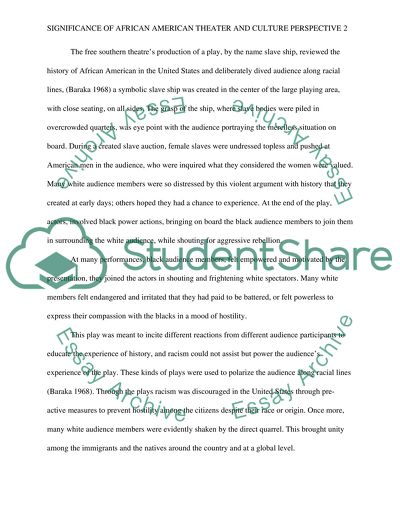Cite this document
(“What are the significance of African American theater and culture from Essay”, n.d.)
Retrieved from https://studentshare.org/visual-arts-film-studies/1494990-what-are-the-significance-of-african-american
Retrieved from https://studentshare.org/visual-arts-film-studies/1494990-what-are-the-significance-of-african-american
(What Are the Significance of African American Theater and Culture from Essay)
https://studentshare.org/visual-arts-film-studies/1494990-what-are-the-significance-of-african-american.
https://studentshare.org/visual-arts-film-studies/1494990-what-are-the-significance-of-african-american.
“What Are the Significance of African American Theater and Culture from Essay”, n.d. https://studentshare.org/visual-arts-film-studies/1494990-what-are-the-significance-of-african-american.


